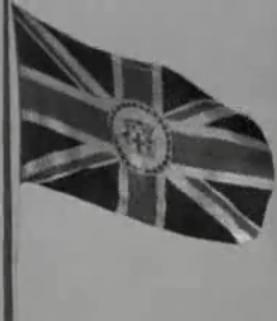 zachary harden
zachary harden
Keywords: olympic games | berlin |
Links: FOTW homepage | search | disclaimer and copyright | write us | mirrors

Last modified: 2023-06-10 by  zachary harden
zachary harden
Keywords: olympic games | berlin |
Links: FOTW homepage |
search |
disclaimer and copyright |
write us |
mirrors
National flags at the Summer Olympics, 1936, Berlin:
General remark on ease of identification of national flags:
There are quite a number
of photographs showing flags; however, not all of them are as easily
identifiable on a b/w photograph and not fully unfurled. I found the
following flags strikingly easy to identify: USA, Japan, Iceland,
Panama, Chile, China, South Africa, Philippines, Germany, Union Jacks
(generic)/Red Ensigns (generic)
Slightly less easy were:
Uruguay, Italy, Brazil, Egypt, Turkey, Portugal, Switzerland, Hungary, Latvia, Colombia, Mexico
This is of course a totally subjective
categorization based on a non-random sample of photographs. As the
flags usually were arranged in an alphabetic order, some parts of the
alphabet are systematically underrepresented, mostly due to the
position of the photographers.
Other flag usage:
1. At the Brandenburger Tor there were also German city flags on display, all of them in hanging form, of course.
- Kaiserslautern [4,
special edition, p. 3]: red-white with the arms in the white banner-head.
see
http://kommunalflaggen.de/dbres/images/photos/diewoche-kaiserslautern.jpg
- probably Frankfurt am Main [2, p. 5]: white-red with the arms in the white banner-head
- probably Wiesbaden [2, p. 5]: blue-yellow with the
arms in the white banner-head; the b/w photo looks strange, though, as
the (yellow) fleurs-de-lis are appearing darker than the (blue) field
of the arms.
2. Little flags were used for (most probably) marking
the current records in long jumping: one Olympic flag and one flag
showing a
depiction of the globe on a white field [2, p. 46].
Sources:
[1] Walter Richter et al. (1936) Die Olympischen Spiele 1936 in Berlin und Garmisch-Partenkirchen Band 1.
Cigaretten-Bilderdienst Altona-Bahrenfeld.
[2] Walter Richter et al.
(1936) Die Olympischen Spiele 1936 in Berlin und Garmisch-Partenkirchen
Band 2. Cigaretten-Bilderdienst Altona-Bahrenfeld.
[3] Franz Miller
et al. (1936) So kämpfte und siegte die Jugend der Welt: XI. Olympiade
Berlin 1936. München (Knorr & Hirth).
[4] photographs in illustrated
magazine "Die Woche", 1936.
[5] photograph in: Völkischer Beobachter
24 Juli 1936
M. Schmöger, 4 October 2009
 image located by Esteban Rivera, 06 August 2011
image located by Esteban Rivera, 06 August 2011
Earlier today, I was idly browsing through You Tube when I came across the
following
link.
At 2.34 minutes or thereabouts, you will see flying what appears to me to be the
flag of the Governor of Jamaica. I am no student of Olympic history and do not
know whether the Jamaicans took part in this Olympiad, but even if they did,
this flag must surely have been hoisted in error.
Peter Johnson, 05 August 2011
I'd like to share with you the image displayed at
this link. This appears to show four defaced Union Flags in addition to the
undefaced flag of the United Kingdom. One of these must clearly be that of the
Indian Empire, but what could the other three be? Alas, I cannot zoom in closer
on this image. Further to my last message, I now gather from Wikipedia that
Jamaica did not send a team to the 1936 Olympics. Curiouser and curiouser.
Peter Johnson, 08 August 2011
I'm no expert on British flags, but from what I can read on the
image posted, it says that the four defaced Union Jack flags are (from top
to bottom):
- Malta
- Bermuda
- United Kingdom (GB)
- India
- Jamaica (In this case, you mention Jamaica did not participate, but on the
postcard the name "Jamaica" is clearly seen).
Esteban Rivera, 08 August 2011
Before anyone starts jumping up and down saying "Wikipedia must be wrong",
it's intersting to note that Wikipedia lists 49 competing nations (th no
Jamaica), and other soures (such as N. Blundell and D.
Mackay's massice tome "The History of the Olympics") also list 49 competing
nations - as does
this Wikipedia page. So either publicity for the games included Jamaica, who
later pulled out (possible) or Wikipedia's list accidentally excludes Jamaica
but includes another country hich did not attend (also possible). The former is
more likely though, given that
Wikipedia and
www.olympic.org list all the competing
athletes on subpages - and none of them seems to be Jamaican.
I do note, though, that Jamaica's Olympics Committee was officially recognised
in 1936 - could it be that this is the reason the flag was present? Maybe all
countries with Olympics committees had flags at the games, whether they had sent
a team or not?
James Dignan, 09 August 2011
The organisers of the 1936 Olympics appear to have regarded the respective
Governors' flags as those of the participating colonies themselves.
All the hard work put into the various German flaggenbuchs seems to have been in
vain.
Peter Johnson, 09 August 2011
I do wonder whether that was any more "wrong" than any of the alternative
flags. The red ensign seems to have been used for the countries where it was
authorised as a civil ensign, and for the other three the choice would be
between an unofficial civil ensign, a government ensign or the defaced UJ.
Jonathan Dixon, 10 August 2011
http://www.axisimagebunker.com/store/products/436-flags-of-participating-countries-1936.aspx
Considering that the post card shows 53 flags, with 49 participating countries,
this last explanation would seem the most likely.
Peter Hans van den Muijzenberg, 29 August 2011
![[OG pennant]](../images/o/oly@1936bp.jpg) located by Peter Hans van den Muijzenberg, 19 April 2012
located by Peter Hans van den Muijzenberg, 19 April 2012
Photograph from Hobbys Wood Militaria
Visible at
http://www.hobbyswoodmilitaria.co.uk/german-berlin-1936-olympic-flag-pennant-ref--2577-1250-p.asp:
"German 1936 Olympic Flag Pennant (Ref# 2577), 30cm long white linen pennant
with the five Olympic rings embroidered on. The metal spring clips are rusty,
otherwise in very good condition"
(No copyright claimed, but also no permission for reuse obtained.)
Peter Hans van den Muijzenberg, 19 April 2012